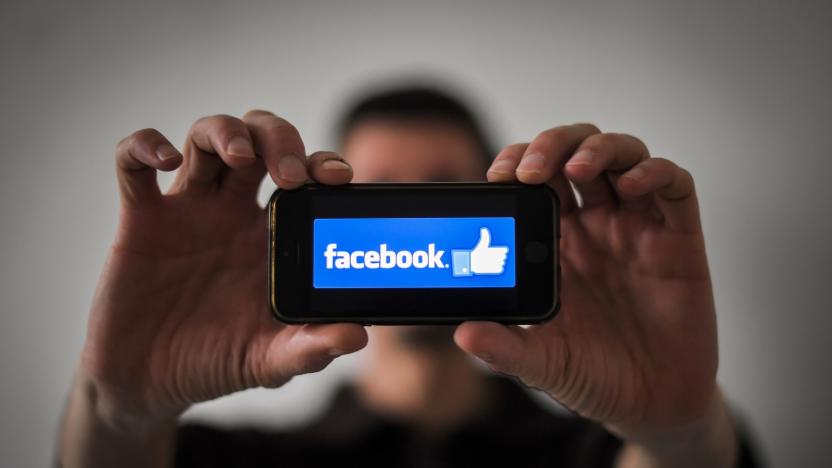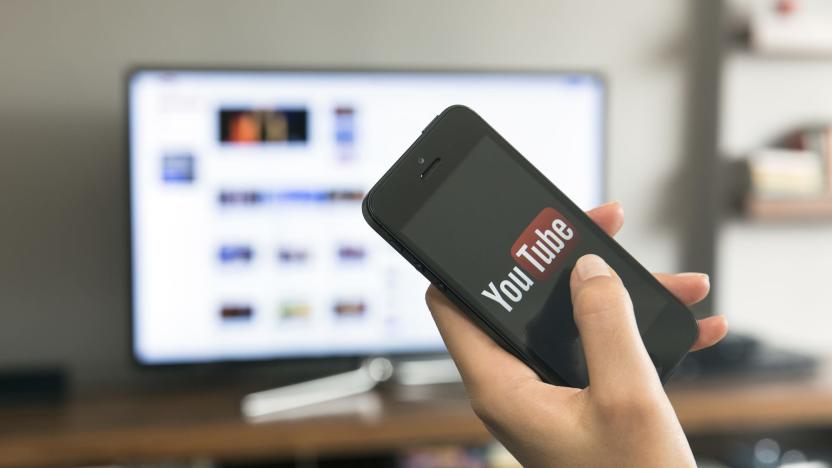PewResearch
Latest

Many Facebook users still don't understand how targeted ads work
Despite major scandals, Congressional hearings, and efforts to highlight user privacy controls, most Facebook users still don't know the social network shares their interests with advertisers, according to a new survey conducted by Pew Research Center. When they do find out, they usually aren't pleased to discover how Facebook categorizes them.

YouTube users are running into fake and dangerous videos, study finds
New data from Pew Research Center highlights both the highs and lows of YouTube. The study -- which was based on a survey of 4,594 adults in the US conducted earlier this year -- found that people of all ages use YouTube for just about everything. It's especially a popular choice for figuring out how to do something they have never done before and for entertainment purposes. Unfortunately, a majority of YouTube users report being exposed to false or "troubling" videos during their visits to the platform.

Online harassment keeps getting worse, study shows
Harassment is sadly an increasing inevitability on the internet with a new study showing that 41 percent of adults saying they've it experienced personally and 73 percent saying they've seen it happen to someone else. According to the Pew Research Center study, the most common form of online harassment is offensive name-calling, which has been personally experienced by 51 percent of men aged 18-24. Men in this age group were also more likely to have been purposefully embarrassed and physically threatened.

Your social networks discourage you from speaking out on politics
The internet is supposed to be a bastion of self-expression, where you're free to speak your mind knowing that someone, somewhere shares your feelings. However, Pew Research and Rutgers University have published a study showing that many social network users feel compelled to keep their mouths shut on sensitive topics. While the majority of those studied say they'd be willing to discuss a political issue like US government surveillance at dinner or at work, they're very shy about doing the same on Facebook or Twitter. Effectively, the internet is mirroring the real world -- people face a "spiral of silence" where they're afraid to share opinions that differ from those of their friends. That's borne out by additional findings that people suspect they have more disagreements with their online buddies than their personal acquaintances.

Pew Research finds 22 percent of adults in US own tablets, low-cost Android on the rise
It shouldn't come as much of a surprise that more Americans than ever now own tablets, but if you'd ever wanted some quantifiable data to go along with that homespun wisdom, then the Pew Research Center is glad to help. According to its latest report, 22 percent of US adults now own a tablet of some form. While the iPad remains the dominant player in the space with a 52 percent market share, this figure starkly contrasts the 81 percent share that Pew reported in 2011. As you might expect, Android tablets have made significant inroads and now account for 48 percent of the overall tablet space. Leading the Android charge is the Kindle Fire, which alone accounts for 21 percent of all tablets sold. It's worth pointing out that Pew's survey was conducted before the release of either the Nexus 7 or the Kindle Fire HD, which means that even the most recent information is a bit behind the curve. You'll find a press release after the break that provides a much broader take on Pew's latest findings in the mobile space, but those who want to go straight to the meat should hit up the source link below.

Shocker: People who read e-books read more
Are you ready for a bombshell? Turns out people who read e-books read more books than those don't. That tidbit comes from the number crunchers at Pew. According to a new report titled "The Rise of E-Reading," the e-book readers read an average of 24 books in the past year, versus the 15 books read by those who didn't. Also, not particularly surprising is the fact that the percent of folks reading e-books is on the rise as well -- the number who claimed to have read an e-book in the year prior made a bit of a jump from 17-percent in December to 21-percent in February. Naturally, the whole printed thing is still a bit more widespread, with 72-percent claiming to have read a paper-type book in the year prior, when surveyed back in December.

Smartphones spread out: Pew says 46 percent of US adults now own one
Our master plan is slowly working, and soon every man and woman in our great nation will own a smartphone. Pew Research Center reports that just under half of adult Americans, or 46 percent, own smartphones currently, meaning that smartphone owners now outnumber their feature phone counterparts by five percent. Pew polled multiple demographics to get its numbers, and there was growth across the board over the last nine months. Of particular interest is the rise in ownership in the study's lowest income demographic -- under $30,000 a year -- which spiked 12 percent to 34 percent. Additionally, it showed that Android and Apple are neck and neck, with 20 and 19 percent market share of mobile owners, respectively, and Blackberry ownership declined from ten percent to six percent. The largest growth came from the 18-24 age group, up 18 to 67 percent. (Who do you think is doing all that checking in on Foursquare?). Of course, you know what they say about statistics, so head on down to the source for a full accounting and form your own opinion of what they mean.

Report: six percent of Americans have made a video call
A recent Pew Research study found that 6% of Americans have participated in a video call with a mobile phone. That number has risen since the iPhone 4's introduction, and is now comparable to the 19% of Americans who have used video conferencing in one way or another. The study was conducted in mid-August and mid-September, just two months after the iPhone 4 was released in the US, UK, Germany, France and Japan. Pew Research found that wealthy users (those making above US$75,000 per year) under 50 years of age were most likely to have made a video call with a mobile phone. While new to the US, video phone calling has existed in other countries for some time. However, poor display resolution and call quality has prevented it from catching on in any significant way. Meanwhile, some iPhone 4 users are unable to place a FaceTime call due to restrictions placed by their carriers. Apple has released a list of iPhone 4 carriers from around the world, with a footnote identifying those that do not officially support FaceTime, including: Jordan Qatar Saudi Arabia United Arab Emirates Egypt We received tips about FaceTime not working in UAE recently, but this is the first official confirmation from Apple that we've found. Apple's language says that FaceTime is not available "From this carrier." We're sure Apple would have FaceTime working everywhere. One wonders why these individual carriers have said no.

Survey says: most teens don't have a data plan, almost all send texts
Microsoft and Verizon might think all the kids want to do with their new Kin phones is pay absurd data rates for a half-baked Twitter experience, but it turns out Generation Upload is still actually just Generation Text Message. That's at least the word according to a Pew Internet Research survey published on April 20th and neatly summed up by a new Flowlogic infographic published today -- only 23 percent of American teenagers with cellphones use social networks with their phones, while 72 percent of all teens use text messaging. You might argue that Kin seeks to flip that balance, but Pew found that 63 percent of teens with cell phones don't have data plans and the vast majority of teen cellphone plans are part of a larger family plan, so the Kin's $30 / month data rate might be a hard sell to Mom and Dad. We also thought voice calling on the Kin seemed like an afterthought to texting and social networking, but it turns out more and more older kids simply turn to the phone: 77 percent of 17 year olds text each other, but 60 percent of them call each other's cell phones -- and only 33 percent of them connect over social networking sites. Perhaps most damningly, Pew says nearly half -- 46% -- of teens play games on their phones, but Kin has no games at all. The report is actually full of other interesting tidbits like this and the infographic is quite nice, so hit the read links to check 'em out -- perhaps Microsoft and Verizon should do the same.

Most dial-up users don't want to upgrade their connections
So here's a bit of brilliant statistics work for you: The Pew Internet & American Life research project has determined after endless polling and number crunching that 62 percent of American dial-up users have no interest in upgrading their connections to something a bit more peppy. In fact, only 14 percent of them would upgrade if they could. They cite high prices, barrier to entry, and -- ooh, is Survivor on? We look at it this way: if you're not already on broadband with the multitude of options, and you can get broadband (i.e. you're not stranded out in the wilderness) in one way shape or form, you probably just don't really care, and we can make fun of you because you're not reading this post anyway.[Via Switched]







